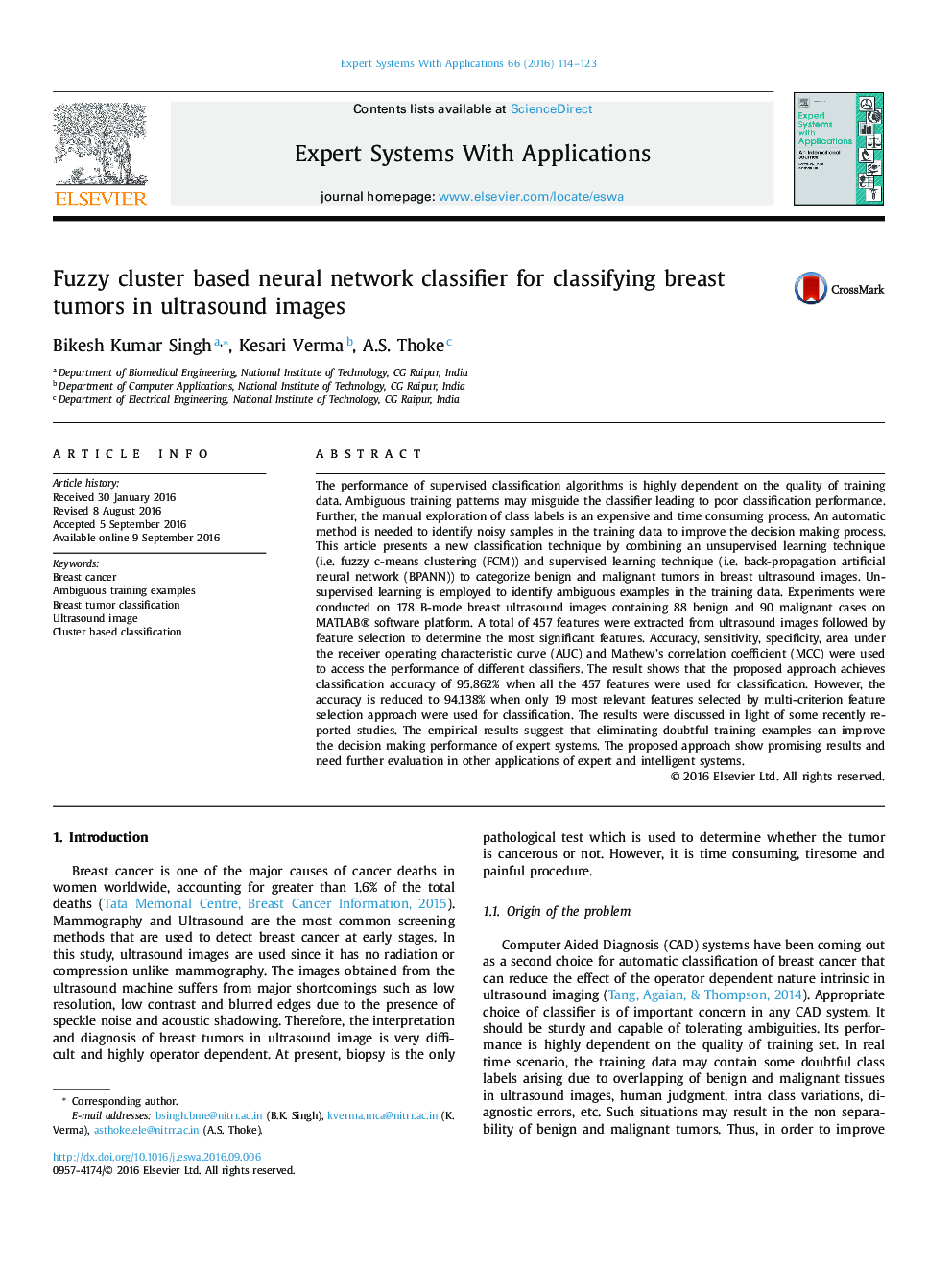| Article ID | Journal | Published Year | Pages | File Type |
|---|---|---|---|---|
| 4943689 | Expert Systems with Applications | 2016 | 10 Pages |
Abstract
The performance of supervised classification algorithms is highly dependent on the quality of training data. Ambiguous training patterns may misguide the classifier leading to poor classification performance. Further, the manual exploration of class labels is an expensive and time consuming process. An automatic method is needed to identify noisy samples in the training data to improve the decision making process. This article presents a new classification technique by combining an unsupervised learning technique (i.e. fuzzy c-means clustering (FCM)) and supervised learning technique (i.e. back-propagation artificial neural network (BPANN)) to categorize benign and malignant tumors in breast ultrasound images. Unsupervised learning is employed to identify ambiguous examples in the training data. Experiments were conducted on 178 B-mode breast ultrasound images containing 88 benign and 90 malignant cases on MATLAB® software platform. A total of 457 features were extracted from ultrasound images followed by feature selection to determine the most significant features. Accuracy, sensitivity, specificity, area under the receiver operating characteristic curve (AUC) and Mathew's correlation coefficient (MCC) were used to access the performance of different classifiers. The result shows that the proposed approach achieves classification accuracy of 95.862% when all the 457 features were used for classification. However, the accuracy is reduced to 94.138% when only 19 most relevant features selected by multi-criterion feature selection approach were used for classification. The results were discussed in light of some recently reported studies. The empirical results suggest that eliminating doubtful training examples can improve the decision making performance of expert systems. The proposed approach show promising results and need further evaluation in other applications of expert and intelligent systems.
Keywords
Related Topics
Physical Sciences and Engineering
Computer Science
Artificial Intelligence
Authors
Bikesh Kumar Singh, Kesari Verma, A.S. Thoke,
